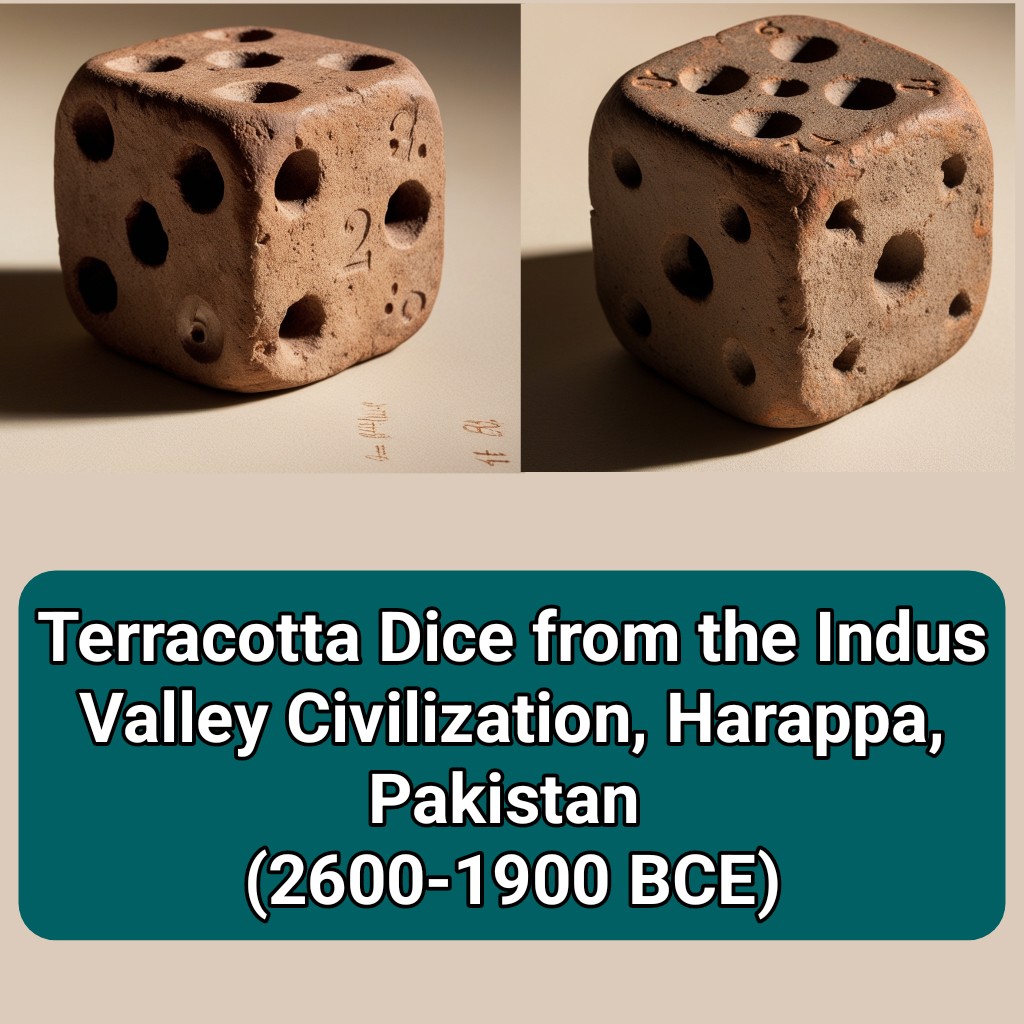
The Indus Valley Civilization, one of the world’s earliest urban societies, is renowned for its advanced urban planning, sophisticated craftsmanship, and cultural artifacts. Among the intriguing artifacts unearthed from this ancient civilization are terracotta dice, which provide a fascinating glimpse into the leisure activities and cultural practices of the people of Harappa, located in modern-day Pakistan.
A Window into Ancient Leisure
The terracotta dice, dating back to 2600-1900 BCE, are small, hand-crafted objects that resemble modern dice but hold far greater historical significance. These dice were likely used in games of chance and strategy, indicating the presence of recreational activities in the daily lives of the Harappan people. Games played with these dice may have had cultural or even ritualistic importance, reflecting a society that valued both entertainment and tradition.

Craftsmanship and Design
The dice are made from terracotta, a type of clay that is molded and then baked to achieve a durable, hardened structure. The craftsmanship reveals a keen eye for detail, with each side of the dice featuring hand-carved dots to represent numbers. Though worn by time, these dots are still visible and provide evidence of the meticulous work of Harappan artisans.
Unlike modern dice, which are uniformly shaped and produced with precise measurements, these ancient dice exhibit slight irregularities, highlighting the handmade nature of their construction. These imperfections lend a sense of authenticity and underscore the resourcefulness of the civilization.
Historical Context
The discovery of terracotta dice in Harappa adds to the wealth of knowledge about the Indus Valley Civilization, which thrived in what is now Pakistan and northwest India. Known for their advanced drainage systems, standardized weights and measures, and impressive trade networks, the Harappans also had a rich cultural life. The presence of dice suggests that games were an integral part of their social fabric, enjoyed across generations.
These artifacts also point to the early use of probabilistic thinking and gaming systems, possibly influencing recreational practices in other ancient societies.
Legacy of the Indus Valley Civilization
Terracotta dice are a testament to the ingenuity and creativity of the Indus Valley Civilization. They connect us to a time when human beings found joy in simple yet engaging pastimes, reminding us of the timeless nature of play and social interaction.
Today, these dice are preserved in museums as priceless relics, allowing us to explore the lives of our ancestors. They not only symbolize the rich heritage of the Harappan people but also emphasize the importance of archaeology in understanding humanity’s shared history.
The terracotta dice from Harappa stand as a reminder of how ancient societies laid the foundations for many aspects of modern life, including leisure and gaming. Their enduring legacy inspires curiosity and admiration for the people of the Indus Valley Civilization.